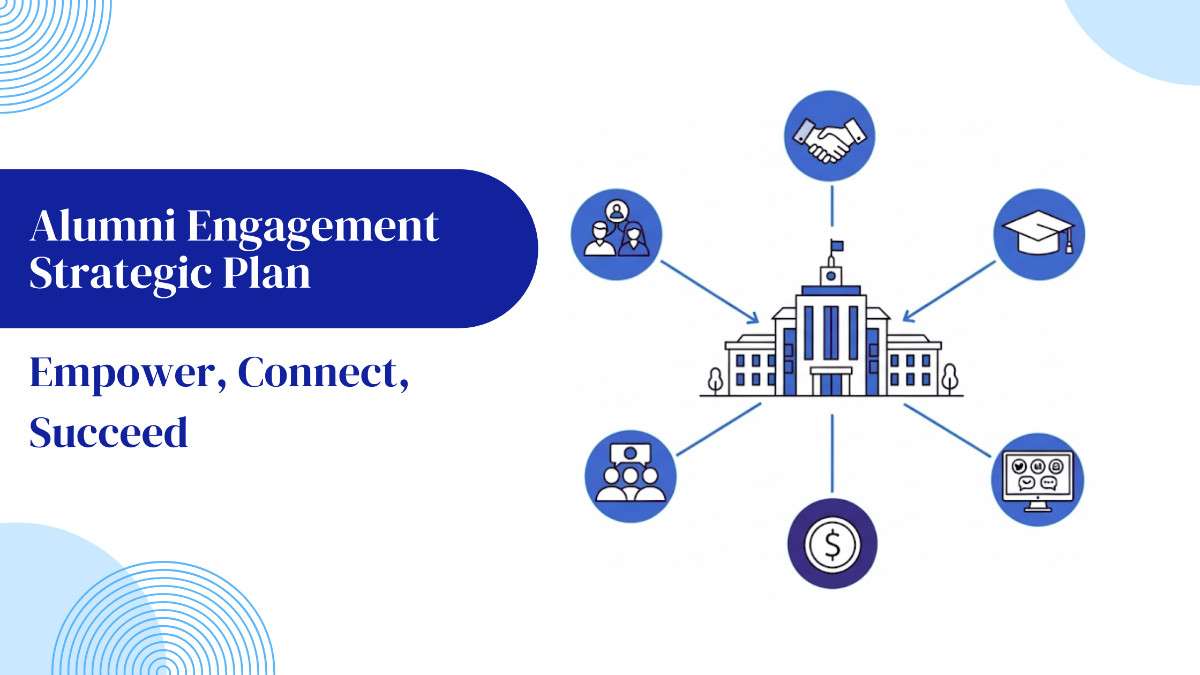Alumni Engagement Strategic Plan: Empower, Connect, Succeed
Build an alumni engagement strategic plan that empowers alumni beyond donations—through mentorship, networking, and measurable impact.

As colleges and universities navigate rising expectations from students, stakeholders, and donors, alumni have emerged as one of the most valuable yet under-leveraged assets. When engaged with intent and clarity, alumni become more than graduates—they become mentors, collaborators, and ambassadors.
From digital outreach to regional networking, the sections that follow will help you build a results-driven plan that prioritizes connection, contribution, and continuity.
Strategic Alumni Planning: Why It Matters for Engagement Leaders
Many institutions limit alumni involvement to annual donations or event invites. But today’s alumni expect more. They want meaningful ways to contribute, stay connected, and see the impact of their engagement.
A well-designed alumni engagement strategies goes beyond fundraising. It builds long-term relationships that benefit both the alumni and the institution.
What Is an Alumni Engagement Strategic Plan?
An alumni engagement strategic plan is a roadmap that outlines how a college, university, or school will attract, involve, and retain alumni participation across various touch points—academic, professional, social, and philanthropic.
It includes clear objectives, targeted programming, and measurable outcomes, all designed to create consistent and value-driven alumni experiences.
Moving Beyond Donations: How Alumni Give Back
While financial support is important, alumni offer much more:
- Mentorship: Alumni can provide career guidance and life advice to students and young graduates.
- Recruitment Support: Alumni can refer students for internships and job placements.
- Guest Speaking and Panels: Their industry insights enrich academic learning.
- Strategic Input: Involvement in advisory boards or institutional planning brings credibility and expertise.
When alumni are invited to contribute their skills and knowledge, their connection to the institution deepens.
Digital Channels for Modern Alumni Engagement
Today’s alumni are dispersed across cities, countries, and continents. Institutions must meet them where they are—online.
Key components of a digital-first strategy include:
- Virtual Events: Reunions, networking panels, and live Q&As.
- Dedicated Alumni Platforms: Portals offering access to exclusive job boards, alumni directories, and forums.
- Social Media Communities: Groups based on location, interest, or graduation year.
Digital tools ensure scalability and sustained communication.
Creating Diverse and Inclusive Opportunities
Alumni engagement thrives when institutions offer varied ways to stay involved. A strong plan includes:
- Hybrid Events: Combine in-person and online formats to increase accessibility.
- Volunteer Projects: Enable alumni to participate in social initiatives or mentorship drives.
- Crowdfunding and Campaigns: Engage alumni in funding specific causes like scholarships or tech upgrades.
When alumni can choose how and where to contribute, participation grows organically.
Engaging Young Alumni Early
Younger alumni often feel overlooked. Yet, their energy and networks can be powerful assets.
Effective strategies include:
- Career-driven programming such as job fairs and resume reviews.
- Recognition initiatives to spotlight their early achievements.
- Short-term engagement options like event hosting or campus ambassador roles.
Starting early creates habits of long-term involvement.
Personalizing Outreach Across Regions
One strategy doesn’t fit all. Regional differences—cultural, professional, and logistical—matter. Segmenting your alumni base and tailoring communication ensures relevance.
Ideas include:
- Regional newsletters and updates
- Time-zone sensitive events
- Local meet-ups led by alumni ambassadors
Personalized outreach makes alumni feel seen and valued.
Measuring Impact and Improving Outcomes
A strategic plan is only effective when backed by results. Key metrics to track include:
- Event attendance rates
- Email open and click-through rates
- Platform usage and engagement
- Volunteer participation
- Number of student-alumni connections
These data points help refine your approach and demonstrate the value of alumni relations to institutional leadership.
These indicators help refine your approach and demonstrate value to institutional leadership. For guidance on standardized metrics, many institutions rely on the CASE Global Alumni Engagement Metrics framework, which outlines best practices for measuring alumni activity across communication, experiential, volunteer, and philanthropic dimensions.
Building a Culture of Lifelong Connection
True alumni engagement isn’t seasonal—it’s sustained. Institutions must invest in creating a culture where alumni feel proud to remain involved, years after graduation.
This includes:
- Celebrating alumni stories publicly
- Offering continued access to resources
- Showing the real-world impact of their involvement
When alumni understand their value, they naturally become lifelong supporters.
Ready to Build Your Alumni Engagement Plan?
If your institution is looking to strengthen alumni relations, now is the time to rethink your approach. Create a strategy that empowers alumni, fosters meaningful contributions, and delivers long-term value to your community.
Want to take the next step?
Request a consultation tailored to your institution.
Frequently Asked Questions (FAQs)
An Alumni Engagement Strategic Plan outlines long-term goals and initiatives designed to strengthen connections between an institution and its alumni. It typically focuses on fostering lifelong relationships, building brand advocates, and increasing participation in mentoring, volunteering, giving, and networking programs.
Key priorities for Alumni Relations typically include increasing alumni participation, fostering meaningful alumni-student interactions, enhancing institutional pride, encouraging philanthropic support, and leveraging alumni expertise through mentorship and career programs.
Planning an alumni engagement strategy involves identifying key audience segments, setting measurable engagement goals, offering varied touchpoints (events, communications, mentoring), and implementing technology platforms for managing data, communication, and performance tracking over time.
A typical Alumni Association strategic plan may include goals like expanding alumni network reach by 30% in three years, increasing alumni donations by 15%, launching mentorship initiatives with student partnerships, and developing a digital platform to track and measure engagement levels. Solutions like AlmaShines are often integrated to streamline such initiatives and provide measurable results.
Suggested Blogs
Let’s discuss the idea
Join hundreds of companies transforming their corporate communities with Almashines






